Kyphosis
Understanding the Symptoms, Causes & Treatments for Kyphosis
Reviewed by: Dr. Christopher Good, Dr. Colin Haines, Dr. Ehsan Jazini
What is Kyphosis?
Kyphosis is a normal outward curve of the spine but hyperkyphosis, or an enlarged outward curve, is an abnormal curving of the spine that can occur at any age. This may be a source of underlying back pain or a culprit contributing to an abnormal curvature of the spine.
As spinal specialists we evaluate the spine through many different means but one of the most important is a physical exam. The human spine has four natural curves. When looking from behind it is normal to have a straight spine with the head centered over the pelvis. When evaluating from the side you notice these natural curves. There are two lordotic curves and two kyphotic curves that alternate to create an “S” like shape. The neck and low back areas are both lordotic curves meaning they curve inward, the low back often referred to as “swayback.” The thoracic spine and sacrum both curve outward referring to the term kyphosis.
The goal of these natural curves is to balance with one another so that a person stands with their head directly above their hips when evaluated from the side. Standing with good posture with our head above our hips minimizes the effect of gravity and allows us to use the least amount of energy when moving. When evaluating from the side, kyphosis should seem like a gentle rounding behind the shoulders. If kyphosis is too elevated there may be a hunched or slouched appearance, often termed hunchback.

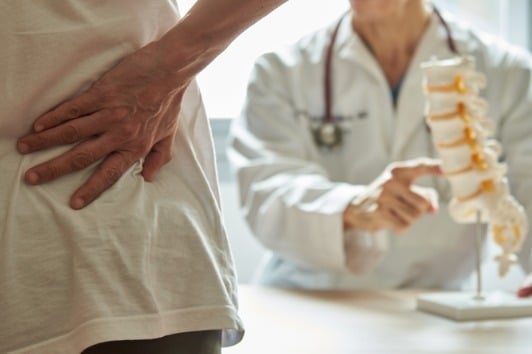
What are Common Symptoms of Kyphosis?
Often patients with kyphosis, especially postural kyphosis may be asymptomatic. However, often kyphosis can cause back pain. Patients may also notice a difference in their appearance prompting further evaluation. The most common area to feel back pain related to kyphosis is in the mid back, or thoracic spine. Other common symptoms include:
- Back pain or stiffness
- Shortness of breath or breathing difficulty
- Changes in appearance (more rounding of shoulder blades, hunchback)
- Poor posture
- Inability to lay completely flat
- Sometimes associated with radiating pain into arms or legs
When Should You Seek Treatment for Kyphosis?
If you’re noticing symptoms associated with Kyphosis and suspect a spinal issue, it’s crucial to consider consulting a board-certified spinal specialist. Reach out promptly to a certified spine surgeon for an accurate diagnosis and timely treatment. Early intervention can significantly improve your overall well-being and provide a broader range of treatment options, which may decrease as symptoms persist. The key to a successful and speedy recovery lies in addressing the root of the pain with your spine specialist as soon as symptoms arise.
While many people experience day-to-day back or neck pain, dismissing it as soreness, this may not be the case for everyone. If your pain persists for more than 10 days, it should be taken more seriously. Evaluate such prolonged pain with a spine surgeon to identify the root issue and determine the appropriate treatment. Additionally, be attentive to other signs related to back or neck pain that should not be ignored, including pain accompanied by fever, pain associated with loss of bladder control, and weakness/tingling/numbness in your arms or legs.
It’s important to note that these are general guidelines based on our expertise in spine care over the past three decades, recognizing that each patient’s symptoms may be unique.
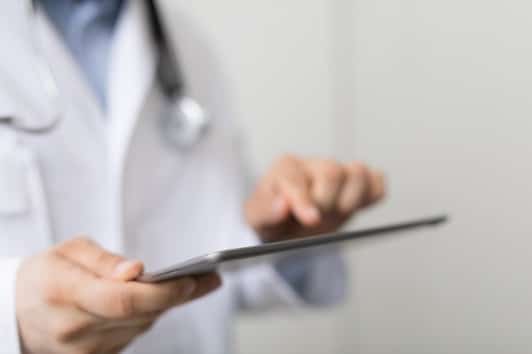
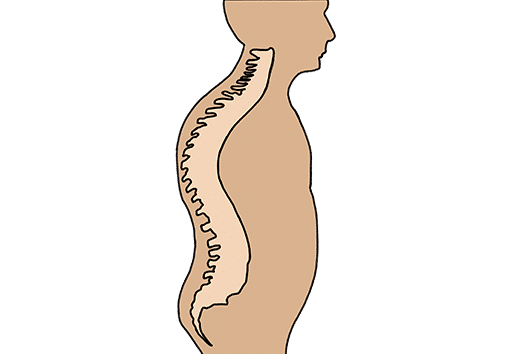
What are Common Causes of Kyphosis?
As spinal specialists we evaluate a patient’s overall spinal alignment, paying close attention to each natural curvature as they can affect someone’s overall posture and quality of life. A normal range of kyphosis is between 20 degrees and 40 degrees. If above that normal range it is termed as hyperkyphosis. There are several types of kyphosis including:
Postural Kyphosis
This is the most common type of kyphosis. A person will stand with poor posture and slouch their shoulders forward creating excess rounding across the thoracic spine. A patient is able to correct this hyperkyphosis by standing up straight and there is no structural abnormality creating (remove this) excess curvature.
Structural Kyphosis
Structural kyphosis is a hyperkyphosis not related to abnormal posture or slouching. Patients with structural kyphosis are unable to consciously change their posture to normalize their spine. Patients may notice they are unable to stand straight and symptoms may worsen over time.
Scheurmann’s Kyphosis
Scheurmann’s kyphosis is a common form of structural kyphosis. This is most commonly diagnosed in adolescence between ages of 12-14 years and typically is greater in males than females. Scheurmann’s kyphosis is defined by kyphosis greater than 40 degrees with at least 3 adjacent vertebral bodies that are wedge shaped greater than 5 degrees. Researchers believe there is an abnormal growth of the vertebral bodies leading to an abnormal wedge shape. This typically occurs during rapid periods of growth and patients may notice an increasing slouched appearance as the curve increases.
Hyperkyphosis
Hyperkyphosis can also occur due to other spinal issues that contribute to an enlarged kyphosis of the spine. This often can be secondary to degenerative disc disease as asymmetric loading across the disc space changes the structural alignment of the spine. This also will occur in the setting of osteoporosis or spinal fractures or possibly after previous surgery.
How is Kyphosis Diagnosed?
Hyperkyphosis is an abnormal enlargement of a normal curvature of the spine, therefore a comprehensive physical exam is of the utmost importance. Often radiograph, including a lateral scoliosis x-ray to fully visualize the cervical, thoracic, and lumbar spine in a sagittal plan is used. By using x-ray imaging spinal specialists are able to measure and follow abnormal kyphosis enlargement. They are also able to visualize each vertebral body to evaluate for abnormal wedging as seen in Scheurmann’s kyphosis.
If more advanced imaging is ordered typically this will include an MRI to evaluate the discs and nerves of the spine. Often patients will note Schmorl’s nodes which are small disc herniations through the endplates of the vertebrae. This type of herniation is different than those that occur in the area surrounding spinal nerves.
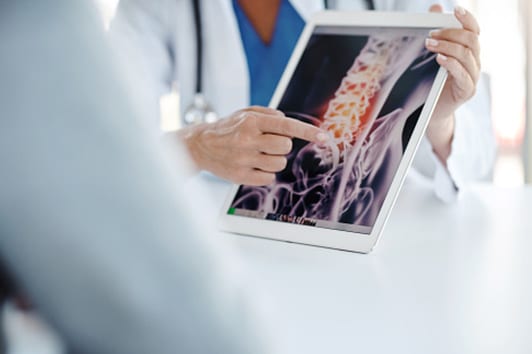
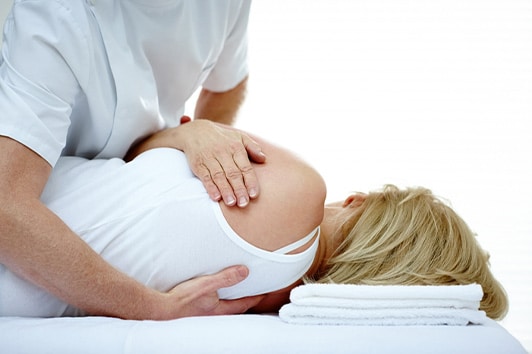
What are Common Treatments for Kyphosis?
Treatment options for hyperkyphosis vary depending on multiple factors including the patient’s age, potential for remaining bony growth, size of curvature, symptoms they are experiencing, and any underlying cause of their kyphosis abnormality. Often non-operative measures are utilized first including spine-specialized physical therapy and exercise regimens focused on improving overall posture, flexibility, and strengthening of the muscles surrounding the spine.
For patients with mild forms of kyphosis often formal treatment is not needed. However, if this patient is still growing, close monitoring is essential to ensure it does not worsen over time. For those with a larger curve or symptoms of pain and stiffness a physical exercise routine can be beneficial. The goal of physical therapy with spinal manipulation is to relieve patients’ symptoms related to their kyphosis but this will not change the underlying structural abnormality of the spine.
Bracing is commonly utilized for hyperkyphosis, especially in those patients not yet skeletally mature. The goal is to try and prevent further progression during times of rapid growth. Bracing is not an effective treatment for adult patients. Bracing is similar to that used in scoliosis patients. However the location or type of brace may differ as each spine is different and therefore each brace should be custom fit to the patient. For those needing bracing, a thoracolumbar (TLSO) brace or Boston brace is often ordered. This lightweight option is custom fit and molded to the patient’s body to provide appropriate pressure in certain areas. This type of brace can be worn under clothes and patients are still able to participate in sports and other activities.
Surgery is an option for those with symptomatic or severe hyperkyphosis that has failed to improve with non-operative means. Corrective surgery is usually recommended when curves are larger than 80 to 90 degrees, measured on x-ray. Sometimes kyphosis can extend into the mid or lower back and in those cases surgery may be recommended sooner, for those with 60-70 degrees of kyphosis. Surgery also may be an option for those with severe or disabling back pain or when kyphosis leads to compression of the spinal cord or nerves.
At VSI we pride ourselves on going through each of the available operative and non-operative treatments to find what will work best for you to return you to your quality of life.

